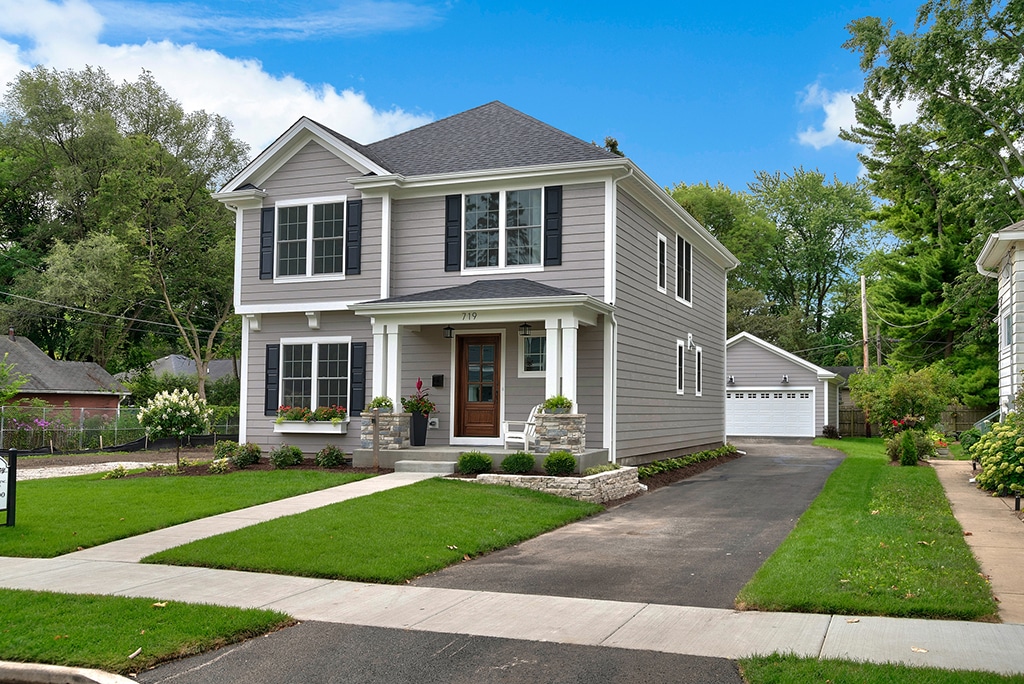
How To Prepare Your Home For Air Conditioner Installation | Fort Worth, TX
AC units are great for keeping your home cool during the summer, especially in Fort Worth, TX. They can even keep your home safe and secure when you have to leave for work in the middle of the night. But, if you don’t prepare your home for air conditioner installation, it could be more trouble than it’s worth. Preparation is key to any major project, whether remodeling your kitchen, adding a few rooms, or replacing an outdated air conditioning system. Installing an air conditioner is something that only a professional air conditioner contractor should do.
Think About the Size & Layout of Your House
The size of your house plays a significant role in determining what type of air conditioner you should get. This is because the amount of cooling power needed is dependent on the volume of air in the home. If the unit is too small, it will constantly run and not effectively cool down your house.
Air conditioners come in various sizes, and it is essential to select the right size for your home. The size of the unit has more to do with its cooling capacity than with its physical dimensions. It’s crucial to pick the proper size since units that are too big won’t operate efficiently, and those that are too small will work harder but not cool down your house as much.
Your air conditioner installation contractor should perform a load calculation that considers several factors, including the size of your home, its orientation, the number and size of windows, where they are located, the level of insulation, and more. A reputable contractor in Fort Worth, TX, will calculate this load before suggesting a particular unit.
Know What Type of AC System You Want
It’s essential to know what type of AC system you want to be installed in your home when preparing for the installation. There are three major types of central AC systems: split systems, package systems, and ductless mini-split systems. Understanding the differences between these air conditioners will help you decide which one best suits your needs.
A split-system unit consists of two main components: an indoor unit that houses the evaporator coil and fan and an outdoor unit that contains the compressor and condenser coil. These units are connected by refrigerant lines that run through a small hole in the wall. The indoor unit is usually installed high on a wall or the ceiling, while the outdoor unit sits outside on a concrete slab or bracket.
Work with Professional Air Conditioner Installation Company
The most important qualification for an air conditioner installation technician is to be certified in installing central air conditioning systems. This certification will ensure that the technician knows how to set up and maintain central air conditioning units properly.
Air conditioner installation is a fairly complex process that requires the right tools, know-how, and experience. While you can find DIY videos online and many retailers sell equipment that allows you to install your unit, it’s essential to ask yourself if this is the best option.
Hiring a professional air conditioner company gives you peace of mind that the job will be done correctly. A professional installer will ensure you get the right equipment for your home and help with any necessary permits and inspections. They’ll also make sure your system is configured correctly and set up. Some companies offer free consultations to help you choose the right air conditioner for your needs and budget.
Before you start shopping for your new AC system, bring in an air conditioner installation technician who can inspect your existing ductwork and make sure your home is ready for its new cooling system.
Ventilation and Accessibility
Some homeowners in Fort Worth, TX, encounter the most common problem when preparing their home for air conditioner installation: ventilation and accessibility issues. If your home doesn’t have enough vents or windows, the cooling system won’t work as efficiently. You want air to flow freely through your home during the cooling process. This will help prevent hot spots and keep your entire house cool and comfortable.
Another common problem is accessibility issues. Some homes don’t have a large enough area for installing an outdoor unit. The outdoor unit needs a solid concrete slab area, clear of debris and away from windows or doors. This will ensure that it’s not obstructed from airflow and provide the proper clearance for air conditioner installation and maintenance professionals to service the unit. Suppose these areas aren’t in place before the air conditioner installation technician arrives for installation. In that case, additional charges may apply for clearing out the area around the outdoor unit and removing any obstructions from proper ventilation.
Installers will be able to do a much better job of installing your central AC if they have access to a clear path. They’ll be able to stand in the right place, get the right angle and avoid obstacles that can’t be moved. You should also remove anything that could be a problem for installation:
Tires: Cars with low-profile tires can make it harder to get the compressor and other equipment up into the attic. You may need to remove bumpers, spare tires, and wheel wells or move them as far from the house as possible.
Pipes: Hoses and tubes should also be cleared away or relocated. Even if you don’t plan on replacing them in the future, you might want those pipes on hand for repairs or installers who need to use the space for something else
Equipment: You don’t have to remove entire pieces of equipment. Move them out of the way so installers can access areas they need. In some cases, installers may need to remove air handlers and ducts as they work temporarily. They should take precautions while they’re moving these parts so they don’t damage any other systems in your home
Keep Pets Away from Workers
Some homeowners in Fort Worth, TX, keep their pets inside during the day and allow them outdoors once everyone has returned from work. You should keep your pets away from workers for several reasons. The first is that they might be scared by the noise of the air conditioner installation. The second is that they may get out of their constraints and run into traffic or something else dangerous. If you have an aggressive dog, make sure that it is locked in another room or removed from the house for the duration of the installation.
Choose a Location
You need to choose where your air conditioner is installed. Air conditioners have to have access to the outside of the building to vent away any excess heat that they generate during operation. This means they need to be installed near an exterior wall and close enough to an electrical outlet to be plugged in and receive power.
The exact location is up to you, but it’s best if there’s a ground-level or main-floor window nearby. You’ll probably want to install the unit in a window where it can get plenty of sunlight throughout the day to generate as much energy as possible from solar power. If you live in a multi-story building installing the unit on a high floor may be difficult since it’s heavy and bulky, and the upper floors are farther from the ground outside.
Check the Existing Electrical Wiring
The existing wiring will likely work if you’re replacing an old AC system. In Fort Worth, TX, many modern air conditioners run on 220-volt electricity, double the standard household voltage. If you’re upgrading from an older system, you may not have enough incoming power to keep up with the demand. You’ll need to upgrade your wiring and possibly your electrical panel to support a modern AC unit.
Planning for AC Installation
Before your air conditioner installation technician in Fort Worth, TX, arrives, it’s essential to do some prep work around your home. This includes:
Cleaning the area where the unit will be installed. This is especially important if you have a central air system and an indoor unit that needs to be mounted in your attic or crawlspace. You’ll want to make sure that these areas are clear of debris so that the air conditioner installation technician can access them easily.
Cleaning the area where the condenser will be placed. This is especially important if you have an outdoor condenser unit. It will need to be accessed during air conditioner installation and routine seasonal maintenance tasks like changing the filter. Ensure nothing is blocking the unit, such as plants or debris, and clean any dust off it.
Choose an Energy-Efficient Model
If you’re planning to buy a new air conditioner you want it to be as energy-efficient as possible. After all, that will save you money on your monthly bills. The first step in choosing an energy-efficient model is to know the Energy Efficiency Rating (EER) of the units available for purchase. The EER rating shows how well a unit performs during regular operation. It’s important to note that higher SEER ratings don’t necessarily mean better comfort. You should also consider the geographic location where the system will be installed, weather conditions, and other factors such as the size of your home when determining what SEER rating is suitable for you.
Ensure That The Unit Will Get Enough Air Flow
It’s essential to check for anything that might block airflow around your outdoor unit. Things like grass clippings, leaves, or even dirt can build up and block airflow, causing your unit to run inefficiently. So be sure nothing is blocking the airflow around your outdoor unit.
Next, you want to ensure that nearby shrubs are at least two feet away from the outdoor unit. Airflow is essential for proper operation, so you need to keep the area around the unit clear. If your outdoor unit is surrounded by shrubbery, you may consider trimming it back before your air conditioner installation technician arrives.
Finally, you’ll want to ensure you have taken care of any potential debris sources. If you have any pets that shed hair or dander, be sure they’re not near your AC vent. Pets are notorious for shedding dander which can easily block airflow if it’s allowed to get into your ducts or vents
Make Sure Everything Is Dry
A professional air conditioner installation technician should repair any water damage before installing a new air conditioner. This includes any leaks in the roof or foundation and excess moisture.
If you have a window unit installed, it needs only a dry area to be placed; however, if you are installing central air conditioning or a ductless system, keep in mind that the area must be completely dry while work is being done. This will prevent mold growth once the work has been completed.
Remove Curtains and Blinds
If you have curtains or blinds on any windows where a central air conditioner will be installed, it’s best to remove them before your installation day. They could get damaged during the air conditioner installation. This is especially true if there’s any chance that a power drill could accidentally hit them. If they get damaged, it will cause another expense and more work for you because you’ll need to replace them. Curtains and blinds can also get in the way during the installation process, slowing down the work and increasing your cost.
Quality Air Conditioner Installation in Fort Worth
The air conditioner is the heartbeat of your home: it keeps your family comfortable in the summer, maintains a natural internal temperature, and ensures that your entire household will be well-rested. The best way to prepare your home for air conditioner installation is to have an installation contractor perform the installation. To be sure, a professional air conditioning contractor has more experience than most homeowners when installing AC systems. Call One Hour Air Conditioning & Heating of Fort Worth, for air conditioner installation, inspection, repair, and maintenance.


